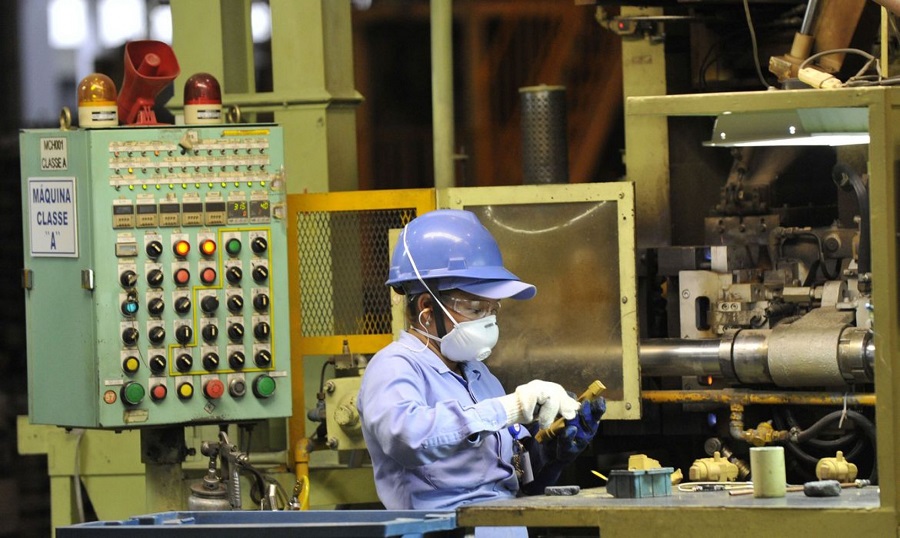RIO DE JANEIRO, BRAZIL – In a year in which the financial market is forecasting 0.3% growth in the Gross Domestic Product (GDP) – according to data from the Central Bank’s Focus report -, industry should play a major role in pushing this figure down.
While the services, agribusiness and livestock sectors will have a neutral or expanding effect on activity, industry – which has a 20% weight in GDP – will suffer from the rise in interest rates, falling back and negatively affecting the economy. If this drop is confirmed, the sector will record 7 declines in 10 years.

According to the Getúlio Vargas Foundation’s Brazilian Institute of Economics (FGV/Ibre) projections, the country’s GDP should grow 0.6% in 2022, with the agriculture and livestock sector growing 3.5% and services 1.3%. Meanwhile, the industrial sector should drop by 1.1%, with the transformation industry registering the worst performance: a decline of 3.2%.
For Itaú Unibanco, GDP should drop 0.5%. However, agribusiness and services will grow 1.3% and 0.5%, respectively, while industry will shrink 3%. The bank has no estimates for the transformation segment alone.
The scenario is of concern especially because industry is the sector that generates the most formal jobs. Estimates by the Institute for Industrial Development Studies (IEDI), based on Brazilian Institute of Geography and Statistics (IBGE) data, show that, on the 2019 to 2021 average, 63.9% of the industry workforce had a formal job contract. In services, the proportion was 40% and 16.6% in agribusiness.
In the case of manufacturing industry, the multiplier effect on the economy is also higher. Each R$1 (US$0.19) generated by the segment leads to an increase of R$2.14 in GDP. In the services sector, the effect is R$1.46; and in agribusiness, R$1.67, IEDI points out.
TIGHTENING
More sensitive to economic cycles than the other sectors, industry should suffer in 2022 mainly due to monetary tightening. A year ago, the basic interest rate, SELIC, stood at 2%. Currently, it stands at 10.75% and the financial market expects it to reach 12.25%. As the industry’s demand depends on access to credit, a 10 percentage point increase in interest rates is likely to slow it down.
“Those who consume services don’t usually use credit. In the industrial sector, credit is important. That’s why industry is more sensitive,” says Itaú Unibanco economist Luka Barbosa.
IBRE economist Claudia Perdigão points out that inflation has eroded the purchasing power of families, who have started to rethink the acquisition of higher value goods. In her opinion, despite the fact that inflation expected for 2022 is lower than that registered in 2021 (5.5% instead of 10%), the trend of holding back the purchase of durable goods should persist in the coming months.
Claudia also says she expects a migration of demand from industry to services. As consumers stayed at home at the beginning of the pandemic, they stopped spending on leisure and instead equipped their homes with TVs and computers; now, with the economic opening, an inverse trend should occur. However, Barbosa considers that this effect may have occurred in the second half of 2021 and may have already ended.
IEDI economist Rafael Cagnin, on the other hand, considers the scenario for the industry in 2022 to be “very restricted.” IEDI does not work with projections, but Cagnin points out that the industry has been experiencing an adverse phase since 2014. With no sustainable growth and without accumulating profits, investments in modernization have become increasingly difficult.

